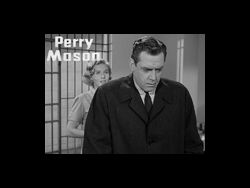The quickest way for established businesses to optimize revenue is to have a stellar customer-loyalty program — there are six steps you can take for repeat sales and referrals.
If you’re not a great steward of your current book of business, it’s futile to look for new customers. Why? It’s far easier to keep a current customer happy than investing time and money just to replace the business.
If you’re unsure about the state of your customer service, here are two key questions: What’s your customer-service quotient? What are your slowest months? Your answers to these questions will help you fashion a new customer-loyalty program.
Here are six steps:
1. Assess your company’s customer-service quotient.
Know how you stand with customers. How do they perceive you and your employees?
Hint: In most cases, if you’re just now dealing with this question, it’s a very telling answer.
True, you can do a customer survey to learn customer opinions. But it’s quicker and cheaper to develop a customer-service checklist and to make certain that it’s followed.
Not to over-simplify, but the words, please and thank you, should be consistently used with customers.
Meantime, watch the reactions of your customers. Are you respected for being helpful, reliable, educational and durable? Consumer attitudes are changing. You must think 1930’s values for business success.
2. Identify and improve any attitudinal shortcomings.
A key component of your company’s DNA should be that all employees believe and act as if your customer’s problems are your problems.
In the event a customer customer complains, listening and empathy should be your No. 1 and No. 2 responses, respectively. Practice the Golden Rule: “Do unto others as you would have them do to you.”
Listening Skills to Improve Your Relationships and Business Performance
Customers are turned off by irritating behaviors – often, business owners and workers aren’t even aware of what they’re saying and doing that tend to annoy customers – behavior that determines why your customers stay or leave.
If that’s your situation, it’s very likely that your employees need customer-service training.
3. Make the customers feel special with a customer-rewards program.
It should be an ongoing program but your slow months are a good time to start. Everyone likes to feel they’re appreciated – like they’re getting a deal.
“Everyday low pricing” works for very few companies. Even low-priced Costco offers specials. Costco’s customers love to taste the food samples, and the bulk buying capabilities promote almost a cult-like following among small businesses.
And, oh yes, daily deal sites such as Groupon will be unprofitable investments for you and they won’t promote customer loyalty.
4. Maintain top-of-the-mind awareness with your customers.
Synchronize your value propositions in all branding – advertising, PR, social media, newsletters, e-mails, and in-person contact.
Every employee should be intimately aware of your value propositions and should use them at every opportunity. This will help to build and maintain trust.
5. Continually fine-tune your customer-service program.
Don’t assume anything. Determine the best ways to stay in touch with customers, including phone calls and thank-you notes.
Remember that your supply chain must meet the expected standards of customers.
6. Get all employees involved.
Exemplary customer service is everyone’s job. That means partnering with your employees for profits.
Again, don’t overlook customer-service training.
If you follow these practices, you’ll create a happier buying environment even in your slow months as well as the prospect of good referrals. Good luck!
From the Coach’s Corner, here are related strategies:
Invigorate Sales with 11 Customer Retention, Referral Strategies — How to attract and keep brand evangelists with customer service and word-of-mouth advertising.
How to Best Profit: Word-of-Mouth Advertising, Customer Service — To increase your sales revenue with word-of-mouth advertising, here are 10 tips.
7 Precautions for a Profitable Layaway Program — Despite the continuous changes in technology, retailers are reverting to a sales and customer-loyalty practice that was prevalent in the 1950s. That would be a layaway program to sell more products to cash-strapped customers. Big box stores, such as Walmart and Toys R Us, have benefited from PR when they’ve announced their layaway programs.
The sun is shining brightly outside, and I gotta give excellent customer service?
__________






